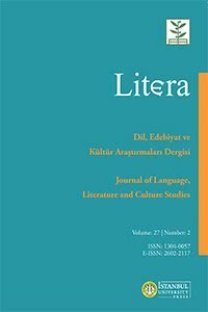Electric Lights and Clouds of Dust: A Reading and Translation of Nguyễn Trọng Hiệp’s Paris, capitale de la France / 大法國玻璃都城襍詠
Öz In the very large critical body on the work of Walter Benjamin, little (and only passing) attention has been devoted to the epigraph of Benjamin’s 1935 exposé, “Paris, Capital of the 19th Century,” a twice-delivered working paper central to his project on the modern city. This epigraph—which also appears at the head of the English-language edition of Benjamin’s collected Arcades Project which has spawned so much work in urban studies—is taken from a rare book of verse written in French and Chinese, published by the Vietnamese diplomat Nguyễn Trọng Hiệp. Paris, capitale de la France offers both historical insight and an estranged perspective to the shifting urban landscape of fin-de-siècle Paris. And also to Benjamin: what did he find pertinent about such an obscure work and why does he give it such a prominent place of its own? More broadly, Nguyễn’s documentary style, both in tone and subject matter, reflects his high-level administrative background and interaction with the colonial Empire. Aesthetic observations are coupled with remarks about traffic patterns, the number of floors in residential buildings and which department stores have the most customers, as Nguyễn documents the technology, practices and “resources” of France. Finally, we offer a translation of the thirty-six poems, drawing from both French and Chinese versions of the text.
Anahtar Kelimeler:
Walter Benjamin, 19th-Century Paris, Bilingual Poetry, Urbanism, Vietnamese in Paris
___
Bartolovich, C. (2002). Figuring the (In)visible in an imperial weltstadt: The case of Benjamin’s Moor. Cultural Critique, 52, 167–208.Benjamin, W. (1999). Paris, the Capital of the Nineteenth Century (Exposé of 1935). In R. Tiedmann (Ed.), & H. Eiland & K. McLaughlin (Trans.), The Arcades Project (pp. 3–13). Harvard University Press.
Claretie, J. (1899). La vie à Paris: 1880-1910 (Vol. 1898). Bibliothèque Charpentier.
Davis, B. C. (2017). Imperial Bandits: Outlaws and Rebels in the China-Vietnam Borderlands. University of Washington Press.
Erber, P. (2019). The politics of strolling. Latin American Perspectives, 46 (4), 37-52.
Ginzburg, C. (1996). Making things strange: The prehistory of a literary device. Representations, 56, 8–28.
Grutman, R. & van Bolderen, T. Self translation. In S. Bermann and C. Porter (Eds.), A Companion to Translation Studies. John Wiley & Sons. https://doi.org/10.1002/9781118613504.ch24
Hibbitt, R. (2017). Introduction: Other capitals of the nineteenth century. In R. Hibbitt (Ed.), Other Capitals of the Nineteenth Century: An Alternative Mapping of Literary and Cultural Space (1–30). Palgrave Macmillan US. https://doi.org/10.1057/978-1-137-57085-7_1
Hokenson, J. W. & Munson, M. (2007). History and theory of literary self-translation. St. Jerome Publishing.
Lor, P., & Wu, F. (2017, September 1). Sisyphus’ music box: A dialogue on race and interruption. C Magazine Issue 135, NP. https://cmagazine.com/issues/135/sisyphus-music-box-a-dialogue-on-race-and-interruption
Nguyen, D. L. (2018). Tourism and the irony of colonial underdevelopment in Nhất Linh’s “Going to the West.” Studies in Travel Writing, 22(4), 371–388. https://doi.org/10.1080/13645145.2019.1621037
Nguyễn, Trong-Hiệp. (1897). Paris, capitale de la France: Recueil de vers / composés par Nguyễn-Trong-Hiệp, dit Kim-giang. Imprimerie de F. H. Schneider. https://gallica.bnf.fr/ark:/12148/bpt6k58158290
Paris, V. (2013). Uncreative Influence: Louis Aragon’s Paysan de Paris and Walter Benjamin’s Passagen-Werk. Journal of Modern Literature, 37(1), 21–39. https://doi.org/10.2979/jmodelite.37.1.21
Perloff, M. (2012). Unoriginal Genius: Poetry by Other Means in the New Century. University of Chicago Press.
Pham, V. Q. (2011). Trajectoires éditoriales de la littérature francophone vietnamienne. Alternative Francophone, 1(4), 1–14. https://doi.org/10.29173/af11244
Su, J.-L. (2008). Shi Poetry: Music Bureau Poems (Yuefu). In Z. Cai (Ed.), How to Read Chinese Poetry: A Guided Anthology (pp. 84–102). Columbia University Press.
- Yayın Aralığı: Yılda 2 Sayı
- Yayıncı: İstanbul Üniversitesi
Sayıdaki Diğer Makaleler
Charles RICE-DAVIS, Mia NAKAYAMA
Traveler Writer, Romanesque Traveler: A Travel Literature Phenomenon
Düşsel ve Gerçek Arasında Doğu’da Seyahat’i Okumak
Troubles Dönemi’nde Baskıya Karşı Dayanmak: Anna Burns’un Milkman Adlı Eseri
Space and Intimate Immensity in Éric Emmanuel Schmitt’s Night of fire
Teleological Trajectory of Subjection: A Critique of Marlovian Heroes
